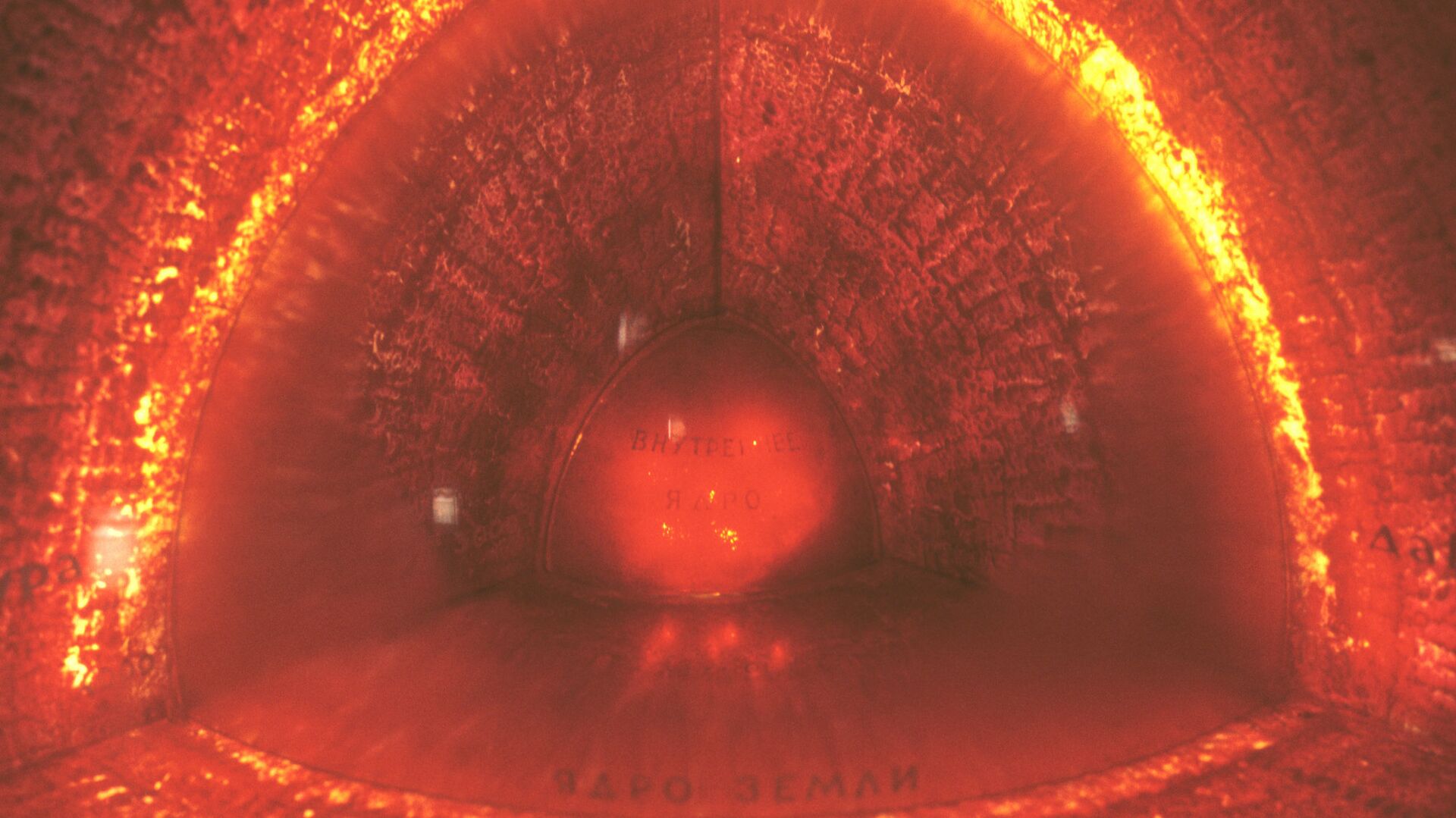https://sputnikglobe.com/20220105/mysterious-structures-near-earths-core-could-be-leftovers-from-planets-formation-scientists-say-1092044737.html
Mysterious Structures Near Earth's Core Could Be Leftovers From Planet's Formation, Scientists Say
Mysterious Structures Near Earth's Core Could Be Leftovers From Planet's Formation, Scientists Say
Sputnik International
The so-called ultralow-velocity zones (ULVZs) are known as the structures that slow down the passage of seismic waves, with the research conducted in the 1990s showing that seismic waves are being slowed up to 50 percent as they pass through the area between the mantle and the core of Earth.
2022-01-05T18:29+0000
2022-01-05T18:29+0000
2023-04-12T16:57+0000
science & tech
moon
earth
space
https://cdn1.img.sputnikglobe.com/img/103935/56/1039355656_0:639:2004:1766_1920x0_80_0_0_4aa257c403c54152b932a126386ac900.jpg
New details about ultralow-velocity zones - mysterious structures between the Earth's mantle and core - suggest that they may have arisen from the same events that preceded the formation of the Moon, according to Nature Geoscience.According to the new findings, the internal structure of ULVZs is consistent with an origin from the basal magma ocean that was initially Earth's outer regions.The research was led by Dr Surya Pachhai from the University of Utah and involved international participants, among them scientists from the Australian National University (ANU). According to the university's press release, the team used thousands of computer-modelled seismic waves to examine ULVZs beneath the Coral Sea between Australia and New Zealand.This area was selected due to the high frequency of earthquakes and the seismic waves these events unleash.According to ANU Professor Hrvoje Tkalcic, the structure of ULVZs has been a scientific mystery for a long time, but the new findings have helped develop "the clearest picture yet".The professor described the findings as a "significant breakthrough" that unlocks "not only a clue as to how the early Earth formed but confirmed ULVZs are clumps of leftovers from this process that are pretty much the same as they were billions of years ago".Dr Pachhai said that the most surprising thing about the team's discovery was that ULVZs are not as homogenous as scientists previously thought, "but contain strong structural and compositional variations within them"."We found that this type of ULVZs can be explained by chemical heterogeneities created at the very beginning of the Earth's history and that they are still not well mixed after 4.5 billion years of mantle convection", he said.
earth
Sputnik International
feedback@sputniknews.com
+74956456601
MIA „Rossiya Segodnya“
2022
News
en_EN
Sputnik International
feedback@sputniknews.com
+74956456601
MIA „Rossiya Segodnya“
Sputnik International
feedback@sputniknews.com
+74956456601
MIA „Rossiya Segodnya“
earth core, earth formation, ulvzs, ultralow-velocity zones, seismic waves,
earth core, earth formation, ulvzs, ultralow-velocity zones, seismic waves,
Mysterious Structures Near Earth's Core Could Be Leftovers From Planet's Formation, Scientists Say
18:29 GMT 05.01.2022 (Updated: 16:57 GMT 12.04.2023) So-called ultralow-velocity zones (ULVZs) are known as structures that slow down the passage of seismic waves, with research conducted in the 1990s showing that seismic waves are slowed up to 50 percent as they pass through areas between the mantle and the core of Earth.
New details about ultralow-velocity zones - mysterious structures between the Earth's mantle and core - suggest that they may have arisen from the same events that preceded the formation of the Moon, according to
Nature Geoscience.
According to the new findings, the internal structure of ULVZs is consistent with an origin from the basal magma ocean that was initially Earth's outer regions.
The research was led by Dr Surya Pachhai from the University of Utah and involved international participants, among them scientists from the Australian National University (ANU). According to the university's
press release, the team used thousands of computer-modelled seismic waves to examine ULVZs beneath the Coral Sea between Australia and New Zealand.
This area was selected due to the high frequency of earthquakes and the seismic waves these events unleash.
According to ANU Professor Hrvoje Tkalcic, the structure of ULVZs has been a scientific mystery for a long time, but the new findings have helped develop "the clearest picture yet".
"Using advances in seismology and mathematical geophysics made at ANU we've shown that ULVZs are made up of layers," Tkalcic explained. "Over billions [of] years of the Earth's shaping and reshaping, these zones have churned close to the planet's core but largely remained intact. It's like an egg in a cake that doesn't get mixed in with the rest of the ingredients but stays as yoke and egg white, despite the constant mixing all around it."
The professor described the findings as a "significant breakthrough" that unlocks "not only a clue as to how the early Earth formed but confirmed ULVZs are clumps of leftovers from this process that are pretty much the same as they were billions of years ago".
Dr Pachhai said that the most surprising thing about the team's discovery was that ULVZs are not as homogenous as scientists previously thought, "but contain strong structural and compositional variations within them".
"We found that this type of ULVZs can be explained by chemical heterogeneities created at the very beginning of the Earth's history and that they are still not well mixed after 4.5 billion years of mantle convection", he said.

